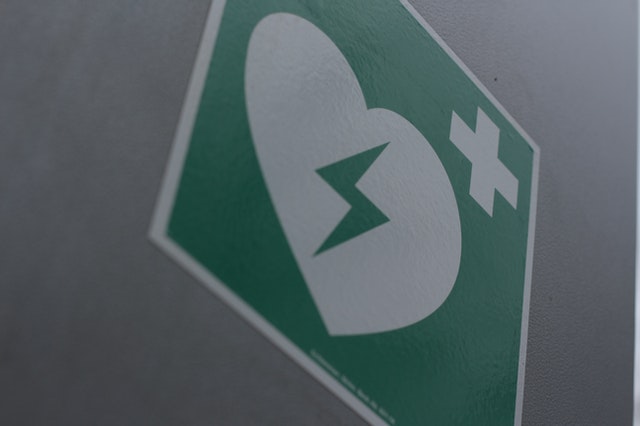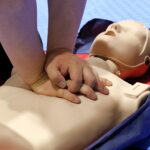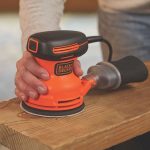It’s natural to want to save lives in an emergency, but your efforts can sometimes cause more harm than good. Performing CPR on cardiac arrest victims is necessary to keep their blood circulating and prevent brain tissue damage.
But what if the patient isn’t in cardiac arrest? CPR can cause serious injury, and in some cases, such as those that involve a heart attack, you might be making the patient’s condition worse. So, what are the signs to stop performing CPR? This article discusses the various signs that tell you when to stop chest compressions immediately.
Obvious Signs of Life
If the patient regains consciousness, you should stop administering CPR. The primary purpose of performing CPR is circulating the blood to prevent the patient from sustaining brain damage. If the patient regains consciousness, their blood is circulating, and there is no longer any danger of brain tissue damage.
Check the victim while performing CPR chest compressions for signs of consciousness such as regained breathing or the patient opening their eyes. If they show signs of regaining consciousness, shake the patient to try and wake them up.
An AED Is Readily Available
An automated external defibrillator (AED) uses technology to record the victim’s heart arrhythmia and administers a shock based on these numbers. This method is easier to use than manual CPR and delivers more specific results.
If you find yourself administering CPR and knowing there is AED nearby, do not stop administering CPR. Instead, try to gain someone else’s attention and direct them to the AED. If no one else is around, continue to administer CPR until paramedics arrive.
Obvious Signs of Death
CPR doesn’t work for people who haven’t had a heartbeat for hours. It also doesn’t work for people who have catastrophic brain injuries. There are a few scenarios that render CPR useless.
Cold to the Touch
The first sign that someone is beyond saving with CPR measures is that they’re cold to the touch. When blood stops circulating, you will no longer feel the warmth emanating from the body. However, it’s essential to consider a few things when analyzing this component of CPR.
First, the victim’s skin might be cold simply because you’re in a cold environment. Conversely, if you discover someone who died in bed and covered by blankets, they may still be warm even when the time of death occurred hours prior.
Rigor Mortis
When the blood has stopped circulating in the body for an extended time, the muscles stiffen. At this point, the body is in the third stage of death. Rigor mortis can occur as early as four hours after death. However, rigor mortis occurs when it is too late to perform CPR.
Livor Mortis
If someone has been deceased for several hours, you will notice a bluish color that results from the blood settling and eventually permeating the skin. Livor mortis or lividity will appear as bruises on the skin.
The lividity will occur as a result of gravity. For example, if someone is lying on their stomach, the bruising will happen on their body’s front side. If they are on their back, it will occur on their back. This sign can be hidden. However, you will usually notice other signs of death if lividity has occurred.
Physical Exhaustion
CPR is an exhausting process. Unless you’re a trained professional or in peak physical shape, you need to take breaks. The more prolonged CPR takes, the more likely you are to become exhausted.
When you’re tired, there’s a significant chance that you mess up your rhythm or that you administer the wrong chest compression depth. Performing chest compressions too hard can potentially break someone’s ribs. Performing compressions too softly fails to circulate the blood throughout the victim’s body.
If there is another CPR-trained bystander around you, you should take shifts performing CPR to ensure you maximize your efforts. If there isn’t anyone around you who knows CPR, you should take a break and make sure you can perform them to the best of your ability.
Medical Professionals Arrive
Medical professionals have more experience than bystanders. If the medical professionals arrive, you should defer to their expertise. Finish the CPR cycle you’re on, and let them take over.
Medical professionals have better equipment and will know how to use their tools to give the victim a better chance at survival. If you notice someone in cardiac arrest, you should contact medical professionals before beginning CPR. The medical professionals should arrive on the scene within minutes, but you should continue CPR until they relieve you.
The Scene Puts You In Danger
Sometimes, when you perform CPR in a controlled environment, you run the risk of the environment becoming unsafe. If you are put in an environment that is unsafe, you should find safety before continuing CPR. One of the worst things that can happen while performing CPR is that you become seriously injured in the process.
If you sustain an injury, it not only means that the medical professionals have to take care of the original victim, but they also have to tend to your wounds. If the situation becomes unsafe, the best course of action is to attract help and move the victim to a safer location.
Moving the victim to a safer location will let you focus on the victim instead of worrying whether you’re in danger.
Conclusion- Signs to Stop CPR
CPR can save someone’s life. However, performing it incorrectly or performing it on someone who doesn’t need it can cause irreversible damage. When considering whether you should administer CPR, consider the online CPR steps. Assess the situation, and make sure you are in a location and the victim needs CPR.
After determining that the patient needs CPR and is in a safe location, call 911, and begin performing CPR chest compressions. Once the authorities arrive or a bystander retrieves an AED, you should let someone else take over.
Related Posts













Medical Assistant is well-respected professional playing important role in healthcare world. You will meet fascinating people and find great satisfaction working with doctors, nurses and physician assistants. American Institute of Health Science & Technology (AIHST) is dedicated to provide the highest standards for a quality and affordable training to diverse workforce to prepare for future leaders in sync with digital technologies to enhance the efficiency of healthcare delivery, personalize treatment options, improve diagnostic accuracy and outcomes for patients in health care industry.